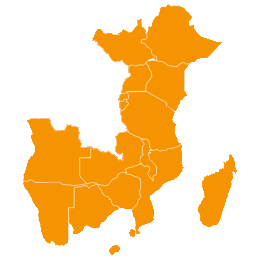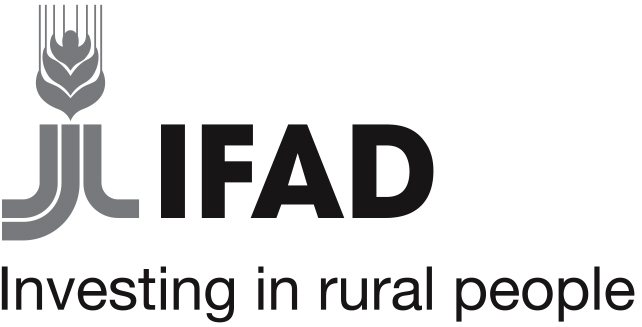Preserving watersheds in Nairobi
"Sustainable watershed stewardship."
BACKGROUND
The upper Tana river is polluted by urban waste. Soil is eroded and flows are compromised by poor farming practices.
Private-public partnership the Water Services Trust Fund provides money for sustainable land and water management and conservation work in the Tana watershed area, from policy level to end-user groups.
WHAT’S INVOLVED
Water fund model
An innovative approach to financing watershed management with a platform for participation of public, private, development actors and communities (4Ps).
Conservation of watershed environment
The fund promotes policies and incentives that support sustainable watershed stewardship and land management. This includes tree-felling practices that maintain soil integrity and help prevent erosion.
Sustainable resource management
Green infrastructure practices use natural systems to trap sediment and regulate water flow. They are often cheaper than traditional reservoirs and water treatment systems.
Digital platform
A mobile platform that supports an efficient and cost-effective approach to reach and mobilize thousands of farmers with awareness, extension advice, information on project services.
EXPLORE THIS SOLUTION
The WSTF project can offer
- Experience of setting up a private public partnership (PPP) to address watershed environment issues

Countries involved
Kenya
Project partners
Community Forest Associations
Project dates
2017-2022
Share this solution
Bookmark this solution
BookmarkShow Full Solution
Summary
Forests and wetlands in the Upper Tana River basin play an important role in maintaining water quality and quantity, providing areas where runoff water and sediment can be stored an filtered naturally. However, since the 1970s, forests on steep hillsides and wetland areas have been converted for agriculture. As a result, sedimentation is becoming a serious problem, reducing the capacity of reservoirs and increasing the costs for water treatment.
The Water Services Trust Fund (WSTF) is a Kenyan State Corporation established under the water act of 2002 and mandated to finance water and sanitation services for the poor and underserved communities in rural and urban areas.
Challenge
Various environmental risks are being faced in the Tana River basin due to the degradation of water catchment areas and forests.
Settlements, poor farming practices such as overgrazing and over-cultivation, and the felling of trees without replantation all give rise to increased soil erosion and decreasing water flows. As a result, 60 per cent of Nairobi’s residents are currently water insecure, while 95 per cent of the water used and consumed in Nairobi comes from the Upper Tana catchment.
There is also a growing threat of river contamination due to inadequate treatment of wastewater from Nairobi City and illegal dumping in the Nairobi River. Both agricultural and industrial water discharges and sewage inflow have degraded the water quality of the country’s lakes.
These challenges to water security will likely be exacerbated by climate change and the consequently unpredictable rainfall.
Solution
As a Kenyan public-private partnership (PPP), the WSTF is designed as an environmental financing mechanism to support sustainable land management, water and soil conservation measures, and integrated natural resource management in the Upper Tana catchment area. It is founded on the principle that preventing water problems at the source is cheaper than addressing these issues further downstream.
A governance and financing mechanism has been set-up and registered as a public charitable trust with the participation of public, private, development actors and communities. Through this mechanism, a sustainable financing pillar has been created and over US$1.7 million has already been raised for the long-term financing of trust operations and conservation activities.The grants from the Fund are being provided to Community Forest Associations (CFAs) and Water Resources Users Associations (WRUAs).
The financing mechanism ensures financial sustainability of both the organization and conservation interventions. This
is guided by a business case (plan) that scientifically provides the costs and benefits of long-term investments in conservation through funds invested in market systems to provide high returns in perpetuity. It includes a periodic replenishment through fees and further contributions by public, private and international donors.
In terms of financial management system, it has a fully-fledged financing department that is audited by a reputable firm. Its financial management capacity is assessed as highly satisfactory and its funds absorption capacity is good, as indicated by the growth in rural disbursements over the last three years from KSh 273 million to KSh 735 million (USD 8.6 million).
Additionally, grants are treated as expensed and replenished at the point of disbursement, which minimizes the time beneficiaries will have to wait until approval. On average approval happens within 90 days.
In order to disburse funds, clear indicators for the targeting and prioritization of initiatives and stakeholders were developed. There are monitored by national and county level advisory structures, so as to be responsive to local requirements.
Financial and technical support can be provided in the form of:
-
Establishing a baseline of priority locations that factors in riparian (watershed) management and wetlands protection for vegetation buffering along riverbanks
-
Reforestation and adoption of agro-forestry practices to reduce greenhouse gas emissions and increase carbon stocks
-
Terracing of hill slopes on steep and very steep farmland as a measure for road erosion mitigation and quarry management.
-
Direct incentives (tree seedlings or support for village nurseries)
-
Non-financial incentives (e.g. capacity development, or support to village institutions) or payments for ecosystem services (e.g. subsidised biogas plants for good riparian management).
Results
Outreach – the project has directly reached more than 23,000 farmers, with a total of 196,000 acres put under sustainable land management. The farmers have adopted rainwater harvesting technology (water pans), and over 10,000 water pans have been installed in the watershed.
Farmers have planted trees – 1.9 million tree seedlings have been planted on agricultural lands, with over 139,000 bamboo seedlings planted to conserve river banks. As a result, water turbidity in key rivers serving Nairobi city has been on a declining trend. At the micro watershed level where intensive interventions are carried out, turbidity has been reduced by an average of 35 per cent. Trees planted in the watershed have helped to improve soil nutrient fixing, reduce erosion, contribute to carbon sinks and increase farm incomes through sales of seedlings, fruits and wood products.
Rain water harvesting – water pans contribute to total water storage of approximately 792 million litres/year, which would have otherwise been wasted as surface runoff, eroding farmlands, clogging river systems and silting up dams. The harvested rainwater has helped farmers diversify their crop production and practice, meaning they can also grow crops in dry seasons. In addition, the farmers now spend more time on their farms because time spent fetching water has been reduced.
Business opportunities – In partnership with Murang’a county 1 million avocado seedlings were planted in two years. The joint project is aimed at diversifying farm incomes and food security for farmers in the watershed, while also contributing to the overall conservation goal. In 2019, 500,000 avocado seedlings have been planted on individual farmlands.
Biogas – approximately 50 biogas units have been installed in households, thus reducing dependence on firewood for cooking. Farmers are also supported by an efficient drip irrigation technology that utilizes harvested rainwater to optimally grow their crops.
Lessons learned and potential for replication
The establishment of an endowment fund as a sustainability pillar from the start of the project is key for the success of the water fund model. However, fund-raising for endowment is slow and more time is required to achieve optimal capitalization of the fund.
Conservation of a watershed as large as Upper Tana involves many actors and different interventions. To be successful, an honest and trusted convener for the stakeholders is crucial to ensure greater collaboration and optimal inclusion of different stakeholders with diverse interests and goals. This can be achieved through transparency and the participation of stakeholders in planning, resource mobilization, monitoring and sharing of results.
Projects such as the Water Fund generate a lot of data and information (socio-economic, biodiversity, hydrological). Continuous analysis, synthesis and dissemination of is crucial to inform project implementation, policy engagement and institutional strengthening. This requires an adequate human resource capacity, which was overlooked at the project design stage.
Next steps
There is a high potential for replication to other cities in Kenya where scoping and feasibility studies have already been completed, for example in Mombasa and Eldoret. Regionally, other cities in Africa (e.g. Tanga, Dar es Salaam in Tanzania and Freetown in Sierra Leone) have expressed interest.
Inspired by the Nairobi Water Fund, and borrowing lessons from it, the Greater Cape Town Water Fund in South Africa has been established to address water shortage problems.
The prospects for sustainability are good. TNC and the Nairobi Water Fund are engaging other stakeholders and players; transparency and stakeholder participation are needed to support stakeholder commitment and ownership; having a sustainable financial mechanism in place should ensure continuity.
Solution Video
Solution Additional Resources
TNC Water Funds ToolboxLast update: 04/11/2020

